Sangokushi Koumeiden (三國志孔明伝), released 2/14/1997, developed by Koei
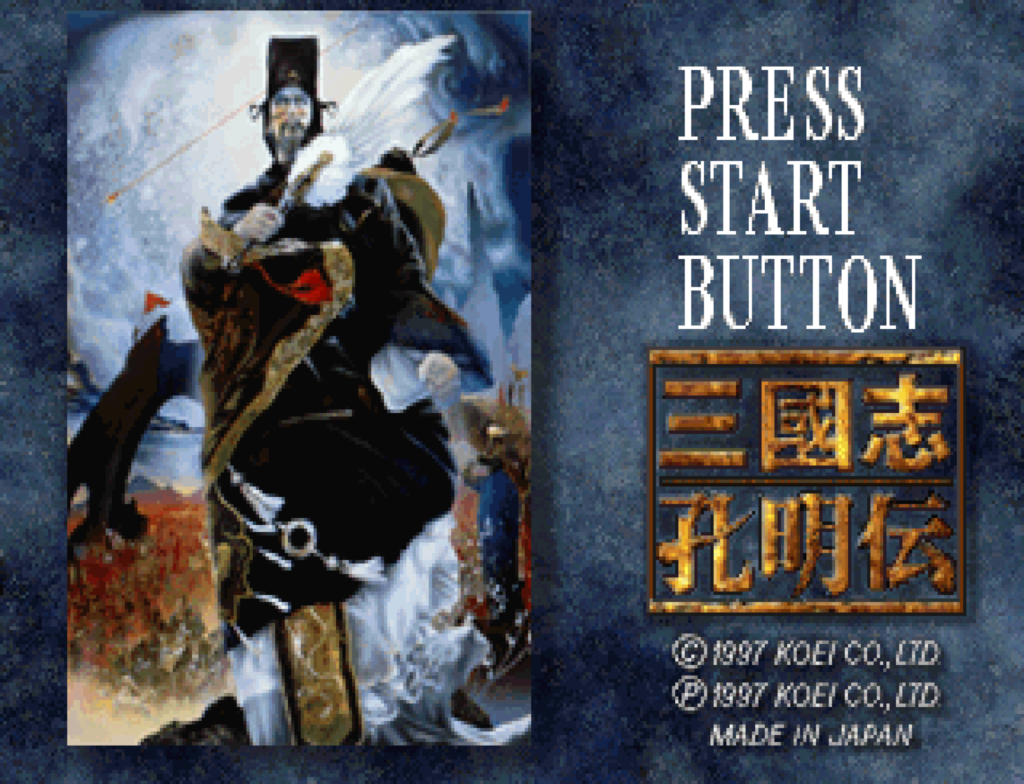
This is the second in Koei’s SRPG series, informally called the “Eiketsuden series” after the name of the first game. Like the first game, it initially came out for computers, and was then ported to Playstation and Saturn, and many years later the Game Boy Advance. It once again takes place in the Three Kingdoms period of China, following the story of the Romance of the Three Kingdoms novel. (The Saturn version seems to be identical to the Playstation version.)
As far as the gameplay goes, it’s nearly identical to Eiketsuden, so I’m not going to describe in again — please read my post on that game for details. The one change I did notice is that they rebalanced the statistics so that equipment is generally more useful than it was in the first game.
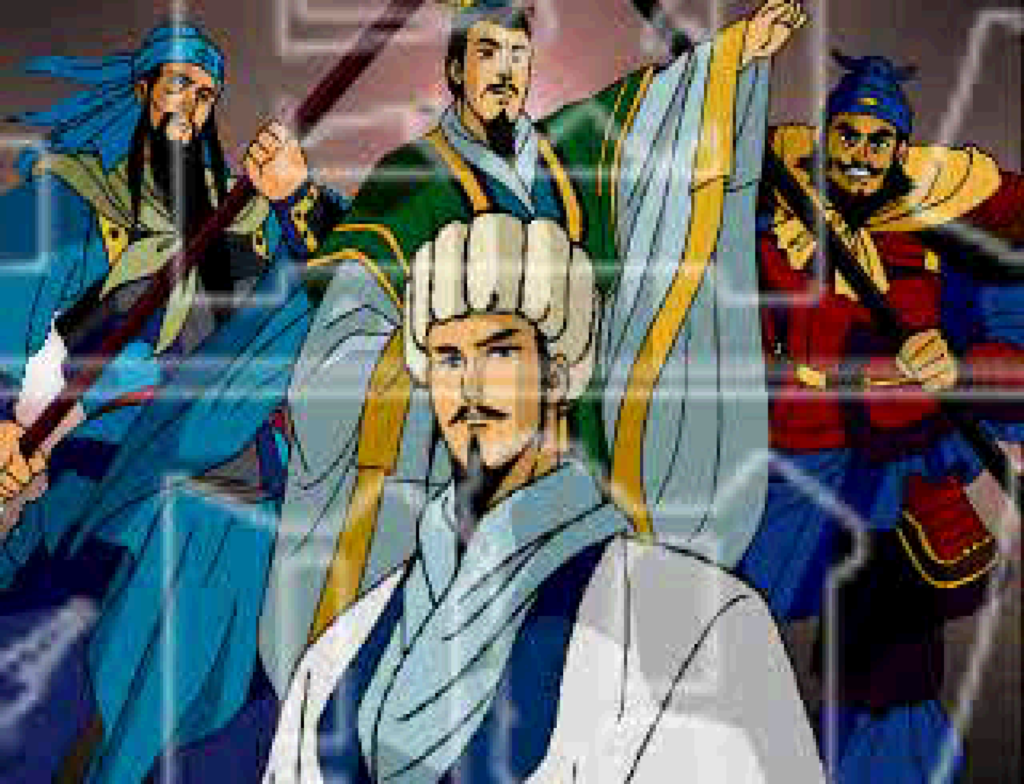
As the title suggests, the game this time focuses on Zhuge Liang, or Kongming (Koumei in Japanese). At first the story might seem to be treading exactly the same ground as Eiketsuden, but most of Zhuge Liang’s famous exploits happened after Liu Bei’s death, so it’s not exactly the same. But there is the same issue as in Eiketsuden — in that game, they had to rewrite the story so that Liu Bei could become the hero unifying China and restoring the Han monarchy, even though in history he died of illness in the middle of the conflict. The same issue happens here; in history Zhuge Liang died of illness in the middle of one of the campaigns and his goal of restoring the Han dynasty ultimately fails.
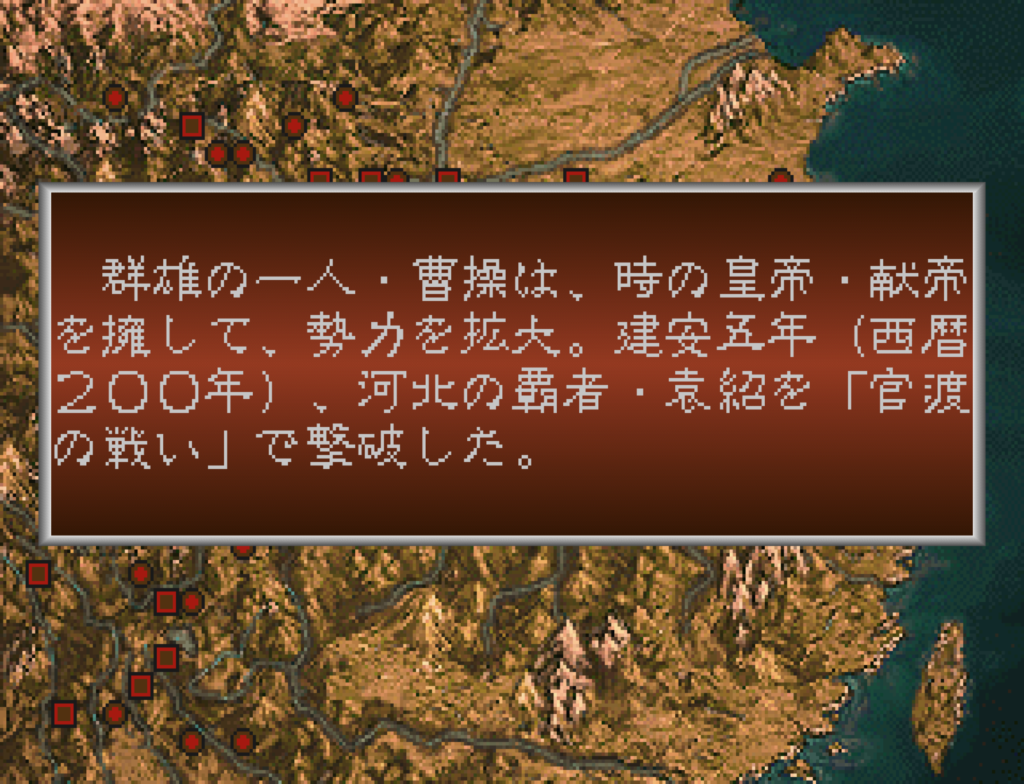
The game is divided into five chapters. The first chapter is the weakest part of the game. A very long prologue summarizes the whole story up to the point where Zhuge Liang joins Liu Bei. As I said above, most of Zhuge Liang’s most famous deeds happen after Liu Bei’s death, when Zhuge Liang served Liu Bei’s son. So chapter 1 covers everything that happens up to Liu Bei’s death. It’s done through very long cutscenes in which a lot of key action is happening off-screen; it feels like Xenogears disc 2 and it’s very hard to get invested in this part of the game when you’re playing a 10 minute battle and then sitting through 45-60 minutes of text and summaries.
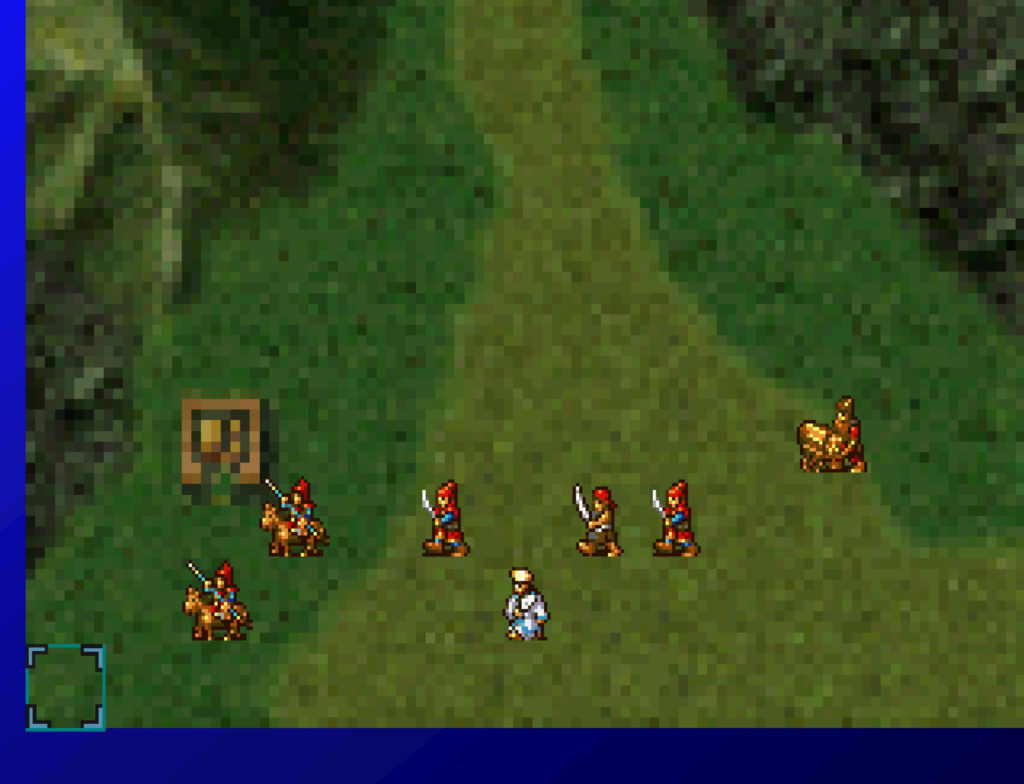
The in-battle graphics are not as good as Eiketsuden; I don’t like the blocky nature of the terrain graphics. This was clearly done to support zooming out the map, but it’s pretty bad and takes some time to get used to. For comparison:
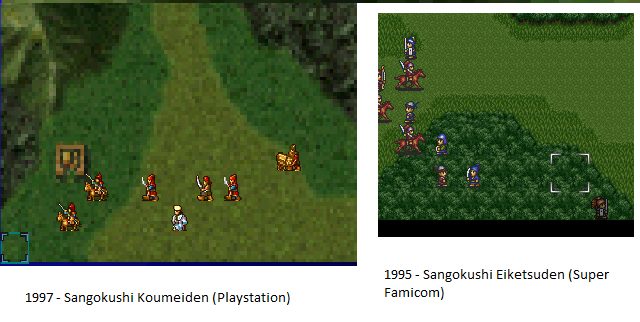
The “one-on-one” fights from the first game are back, but they use anime scenes for the graphics.
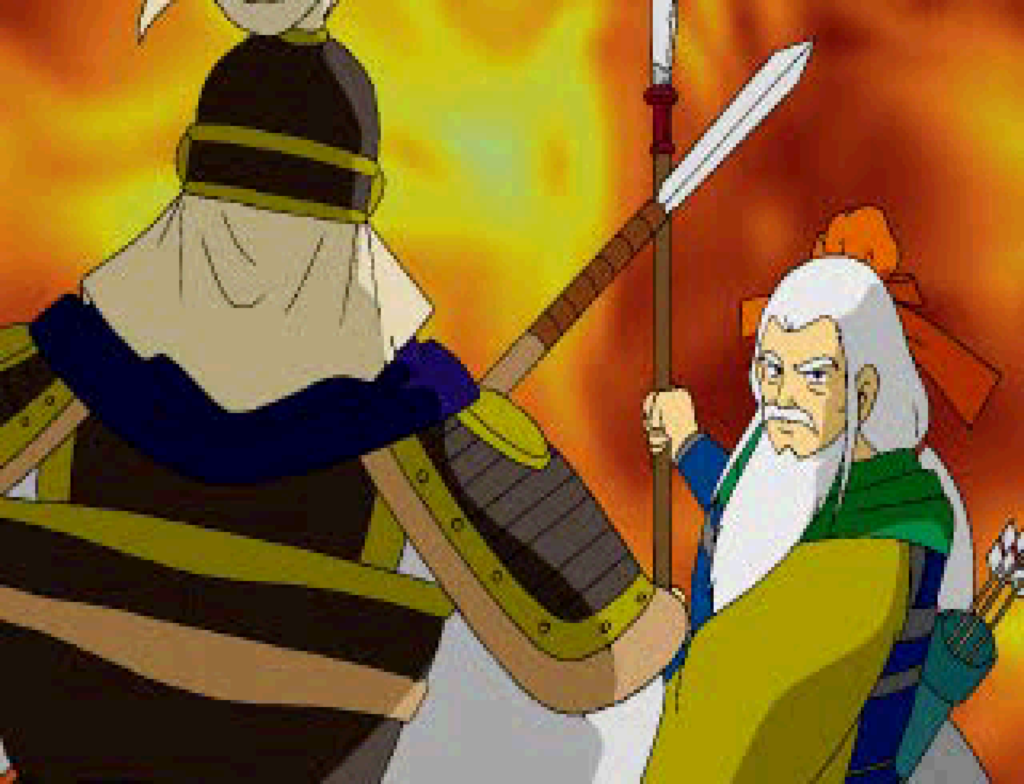
The problem with this is that with a very small number of exceptions (like the scene above), no matter who is attacking who it just shows an anime of generic people saying generic lines (the attackers are more varied than the defenders). It’s odd to see that even people like Cao Cao and Sima Yi don’t have unique sequences. What they should have done instead is have personalized non-anime sequences for the majority of the people and then use anime only for some of the most important characters.
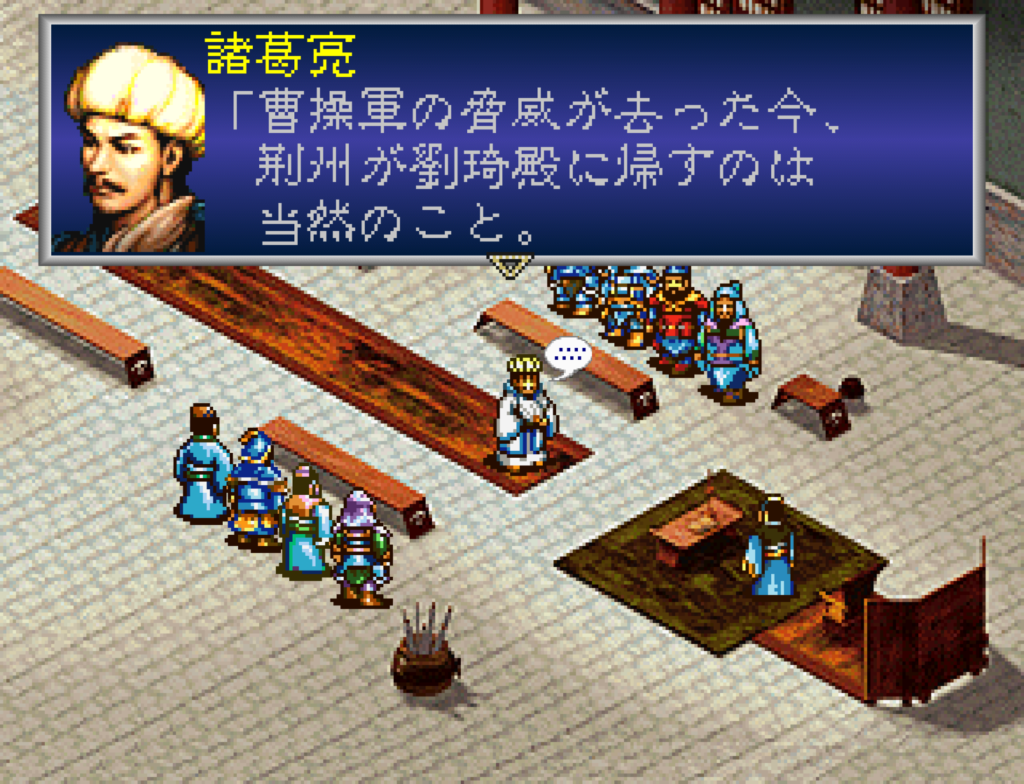
Once the game reaches Chapter 2, it improves considerably. Your team is much more stable than in chapter 1 (and in Eiketsuden) so you feel more like you’re building up a force of people. The story also moves more slowly and feels more in-depth, and the story sequences are nowhere near as long.
Since the focus is on strategy-minded Zhuge Liang, most battles have you pick one of two strategy options before the fight, which can change the goal and the layout of the units. There are also often several ways you can win the map, some of which will give you bonus experience. I always appreciate it when a game offers more variety than just a series of “defeat all enemies” maps.
Chapter two is Zhuge Liang’s Southern campaign, particularly the (probably legendary) seven battles against Meng Huo, where he captured and released him after each battle. It is possible to let him get away as well without capturing him, which changes things later.
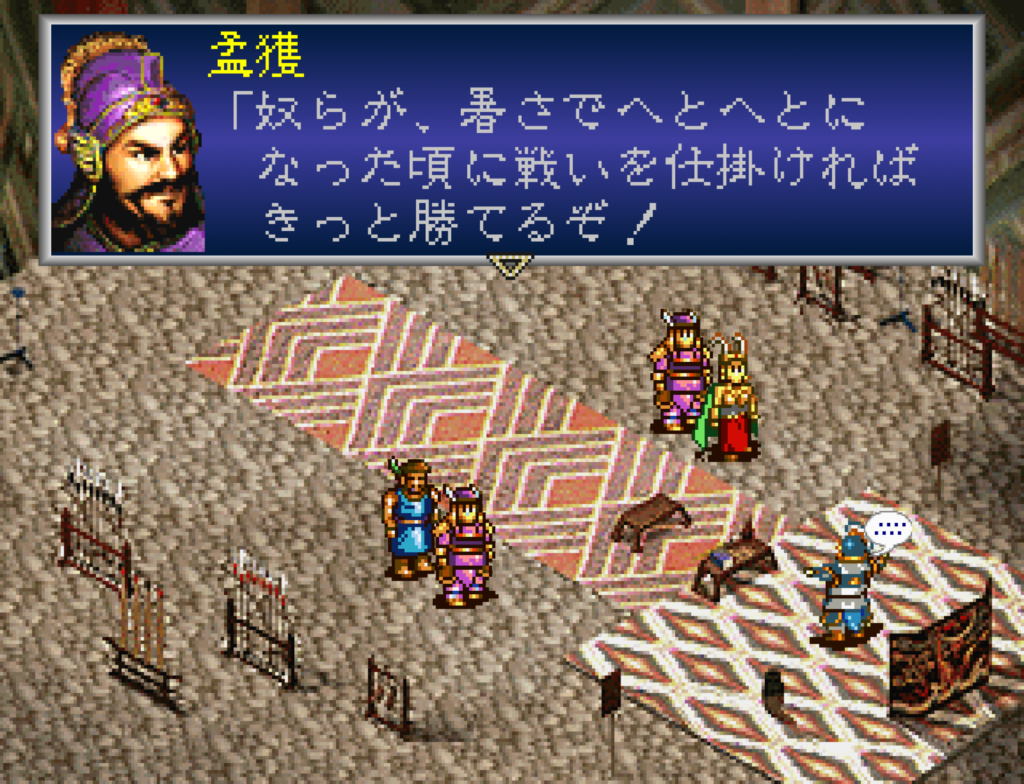
Meanwhile Zhuge Liang’s son Zhuge Zhan is growing up, and you can choose how he will be educated. Choosing “freedom” every time is the best because then you can choose what class to make him at the end, including the Tactician class.
Chapter three is the beginning of the Northern Expeditions. This is only the first one, ending with Zhuge Liang’s execution of Ma Su. You can actually choose not to execute him. If you do the execution everyone gains 5 levels, if you don’t it opens up an alternate ending in the next chapter.
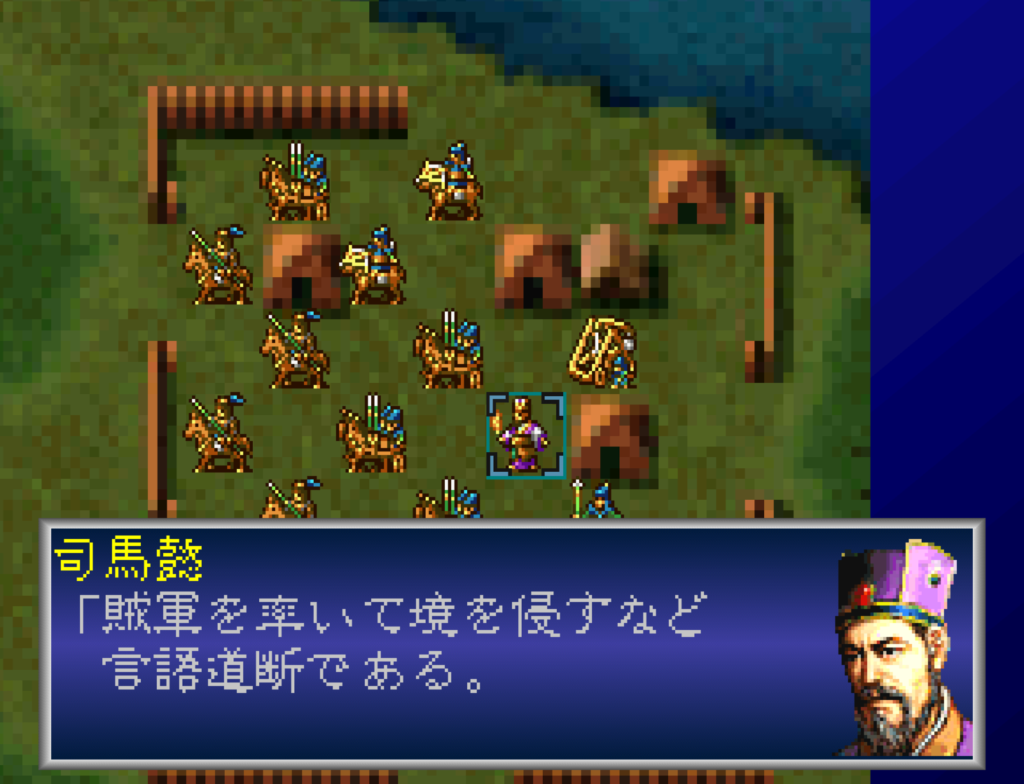
Sima Yi is the primary antagonist of the rest of the game.
Chapter four is the rest of the Northern Expeditions. Here they have to change the story; in the novel, Zhuge Liang dies of illness during these campaigns. His son Zhan dies soon after in a doomed defensive battle. Sima Yi himself dies of illness several decades later, before the ending of the Three Kingdoms period, but his grandson becomes the first Emperor Jin of the next Chinese dynasty.
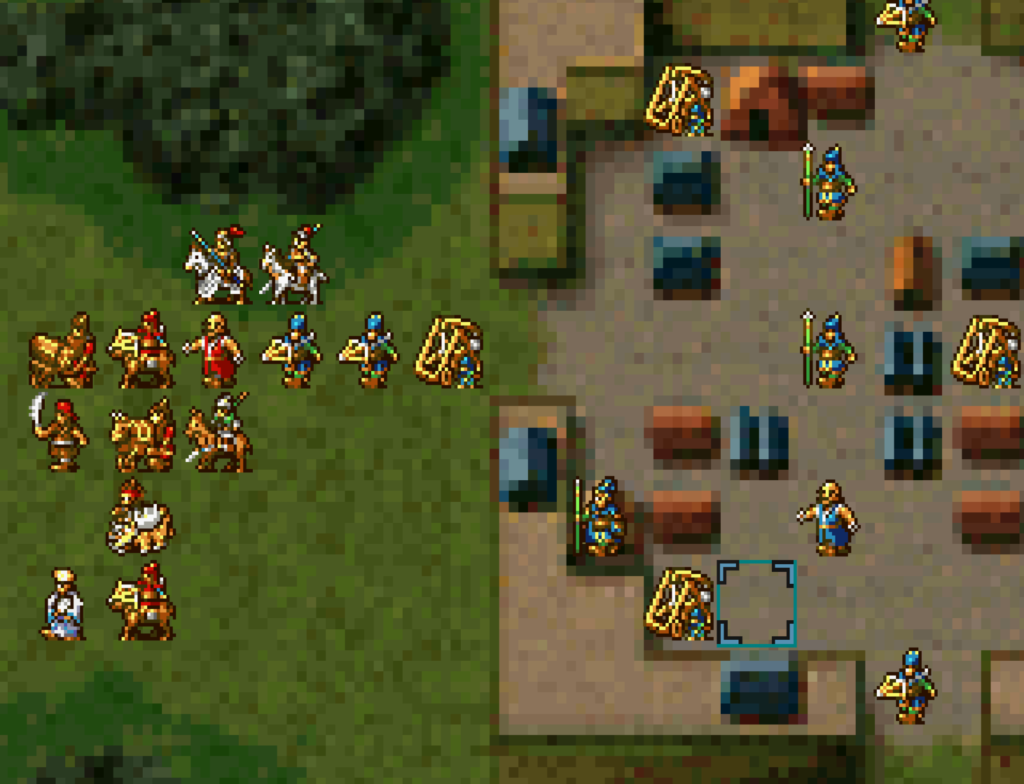
There are a few possible story branches in this chapter leading to “bad” endings. The first is when Sima Yi starts the rumor that Zhuge Liang is going to declare himself Emperor, causing Liu Shan to recall him to the capital — I don’t know if this is historical or in the Three Kingdoms novel; none of the wikipedia pages mention it. In any case, if you did not execute Ma Su in the previous chapter, you can choose to actually start the rebellion following the rumor. This leads to a bad ending but I don’t know the details.
The other thing that can happen is that Zhuge Liang can die of illness. The Japanese site I was looking at does not say how this happens, but an English page I found said that it could happen if you take too many turns and retreat (restart battle) too many times. I don’t know what happens if he dies; presumably the game ends there because the rest of the story depends on him too much for this to be an actual alternate route.
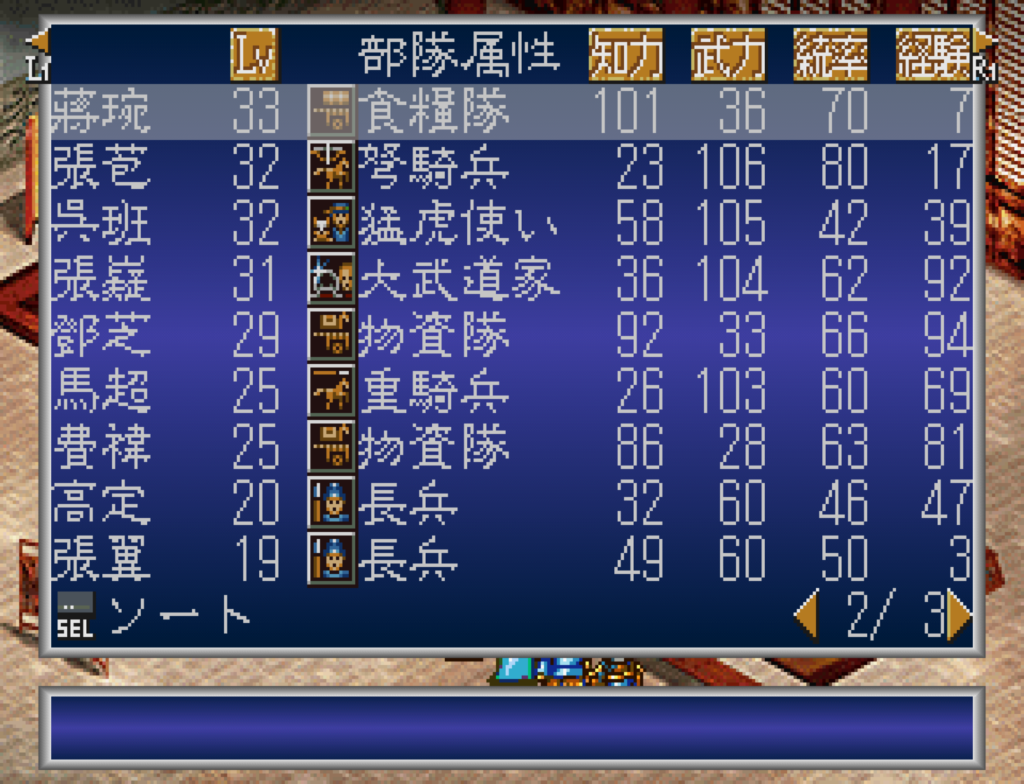
The fifth and final chapter is entirely original. Zhuge Liang makes peace with the kingdom of Wu, which agrees to fight for the restoration of the Han monarchy. Sima Yi usurps power from the Cao family that is ruling Wei, and the final chapter is Zhuge Liang fighting his way to the capital of Wei and defeating Sima Yi.
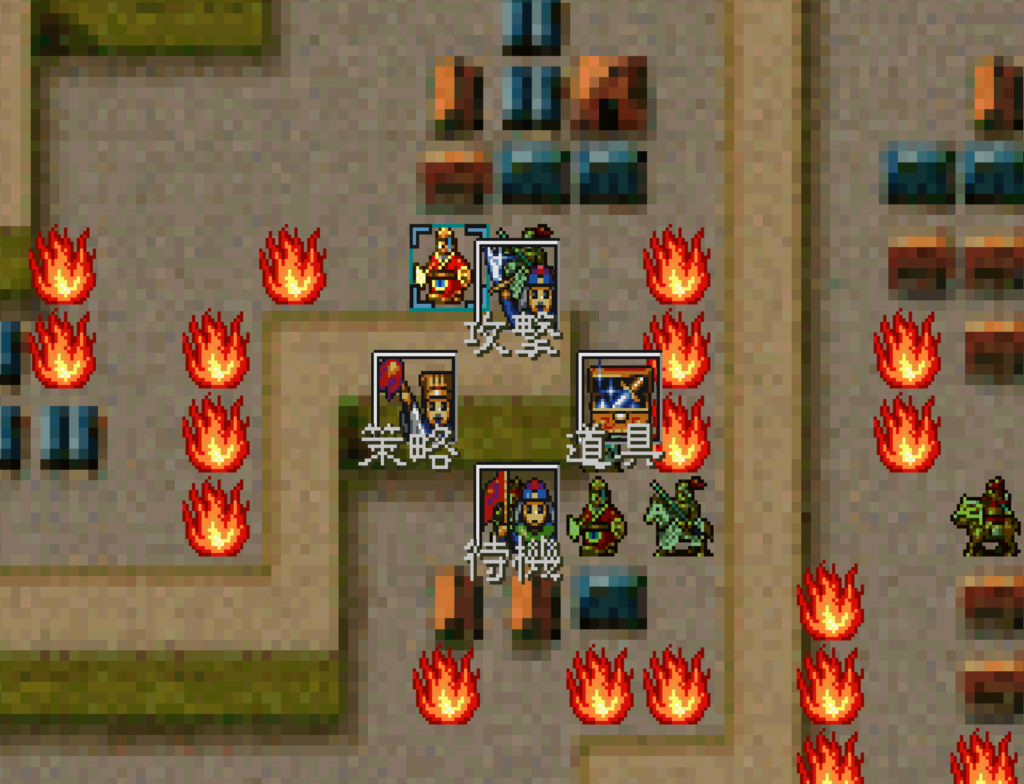
The final fight is rather long but not especially difficult, it’s just slow because you have to move through the palace. IMO any time a player is spending more than one or two turns just moving characters without any action, that’s a failure of the game design. In any case, Sima Yi is the final boss.
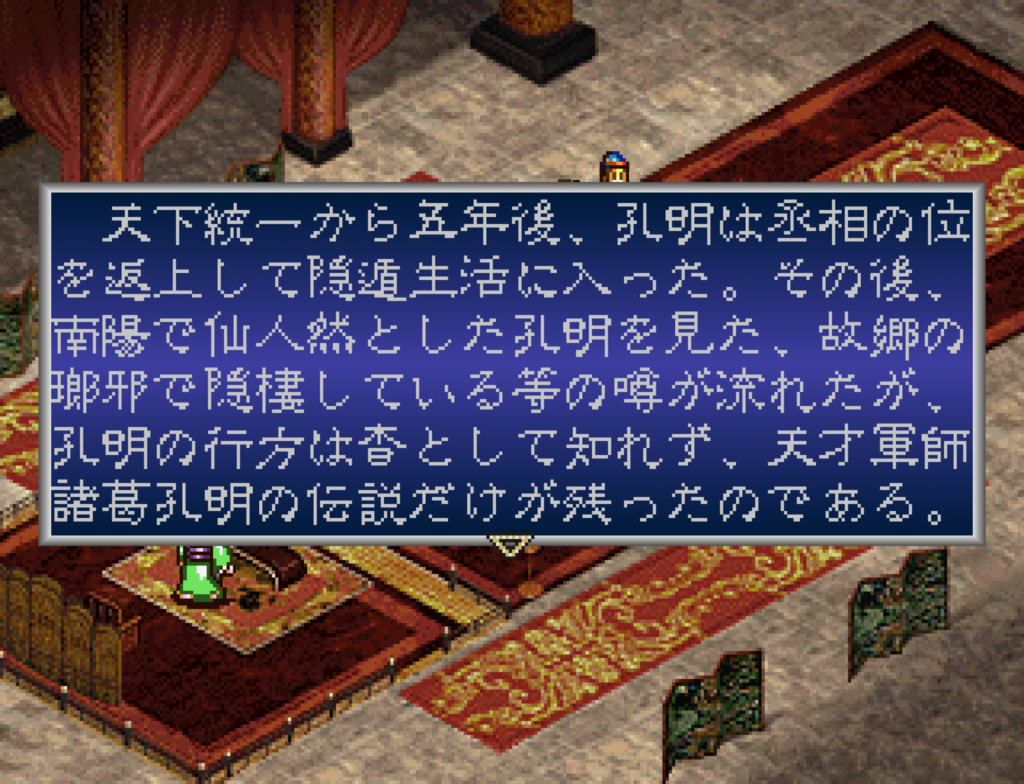
They also find the former Emperor Xian (the last of the Han dynasty) shut up in the castle, so they’re able to restore him to the throne. The ending scene covers the remaining years of Zhuge Liang’s life; he retires after five years and becomes an ascetic.
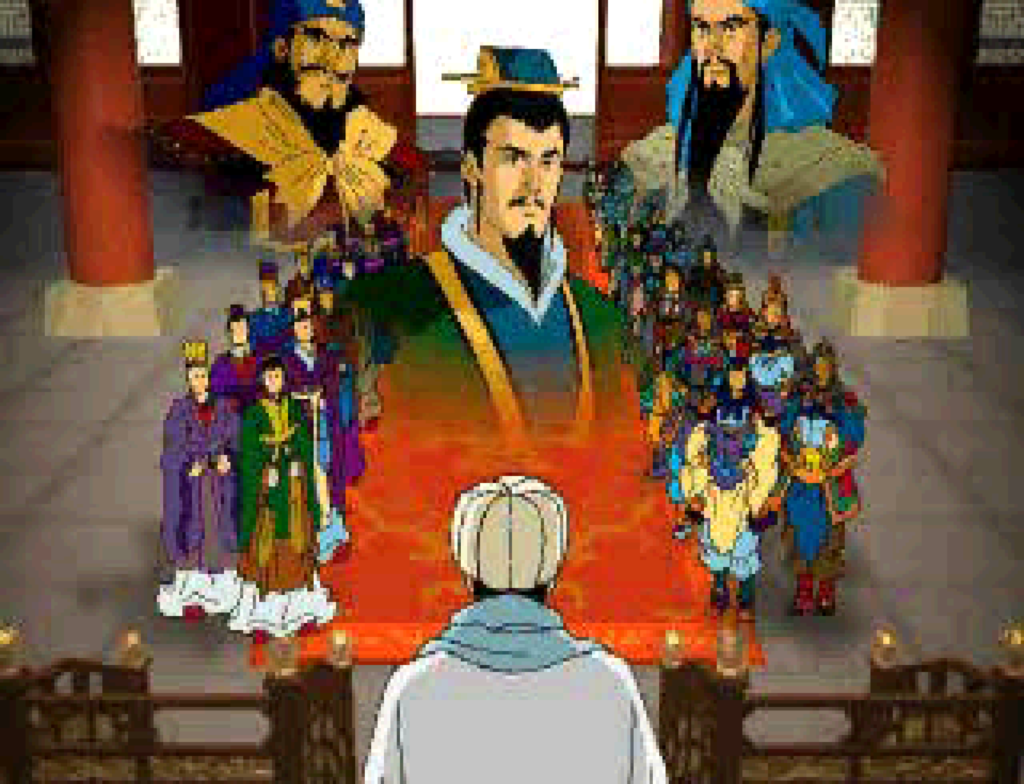
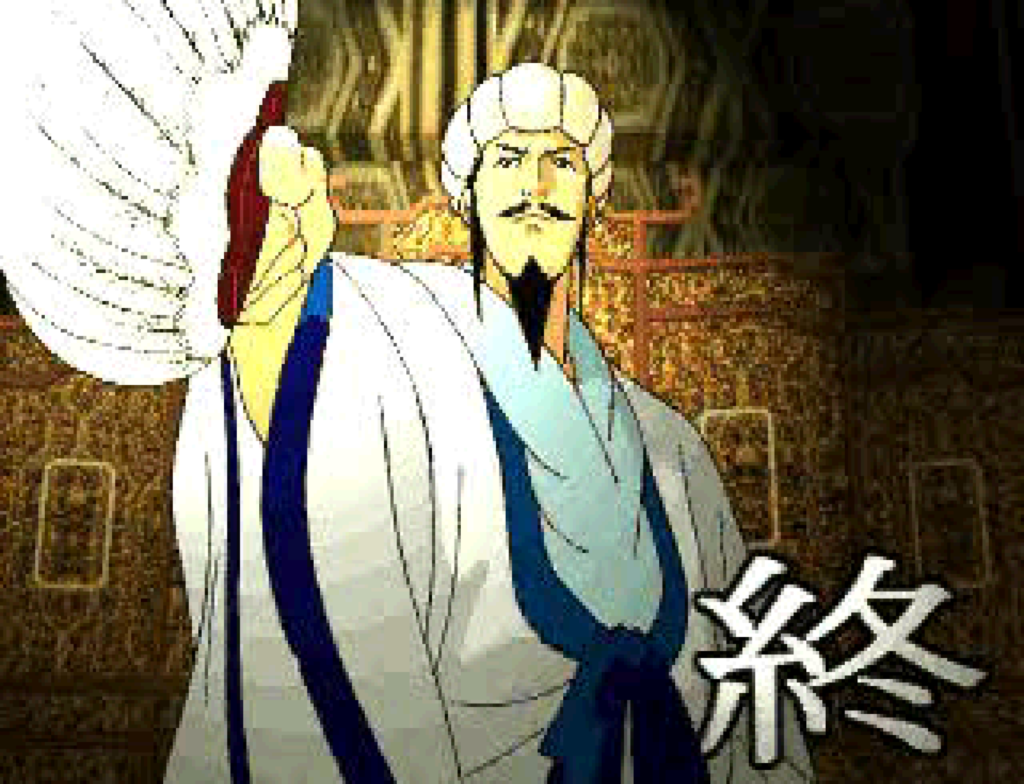
This is a solid B game, I think — the first chapter is a mess but the rest of it is pretty enjoyable. I think that if you are a fan of the Three Kingdoms you would get a lot more out of it than I did.
This series will be back near the end of 1997 as it switches to Japanese history with Mori Motonari and at least a somewhat new system.